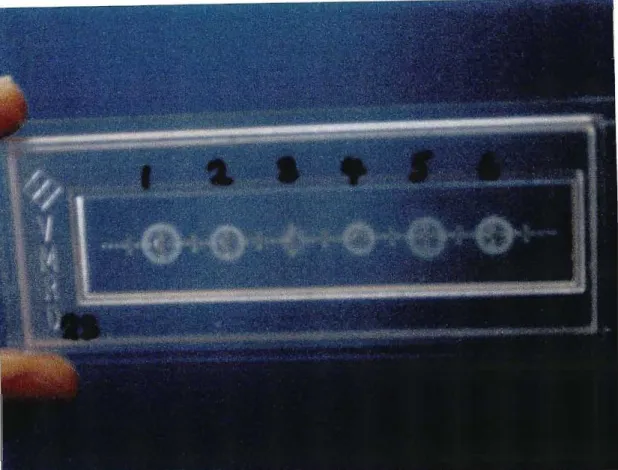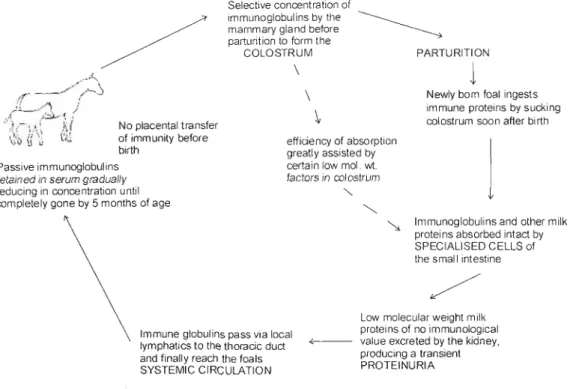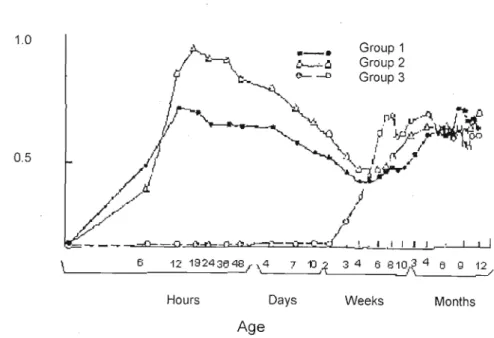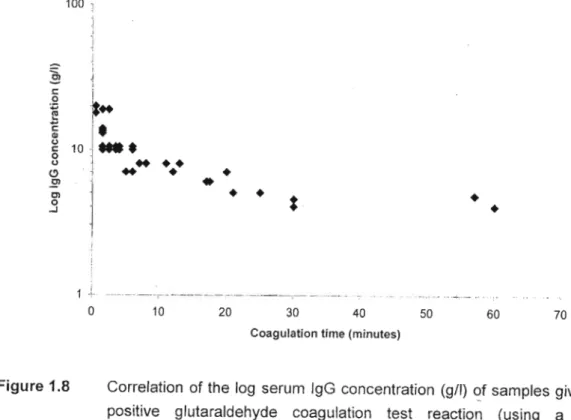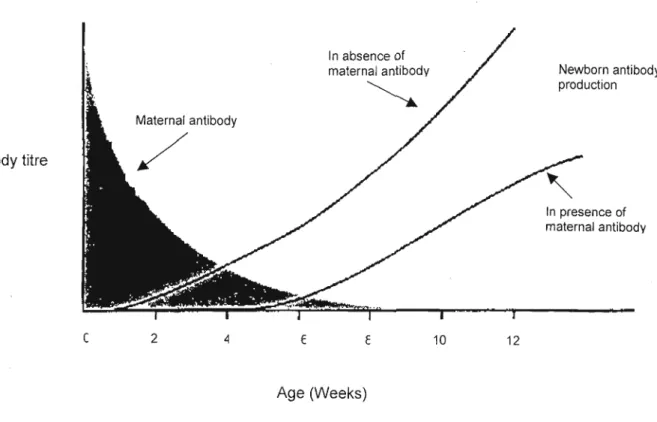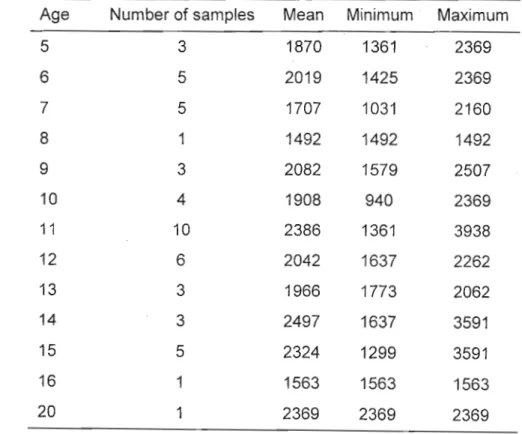The general definition of failure of passive transfer (FPT) is that FPT occurs when the foal has an inadequate level of IgG in the blood (Brown et al., 1991). Failure of passive transmission results in an increased likelihood of foals developing infectious diseases (McGuire et al., 1977 and Clabough et al., 1991).

Testing for transfer of passive immunity
A few drops of a serum sample are placed on the face of the prism and the serum protein scale is read (Figure 1.6) (McBeath et al., 1971). The ZST (Zinc Sulphate Turbidity) test is a simple and rapid method of testing serum IgG levels. The ZST test is a measure of total serum immunoglobulin.
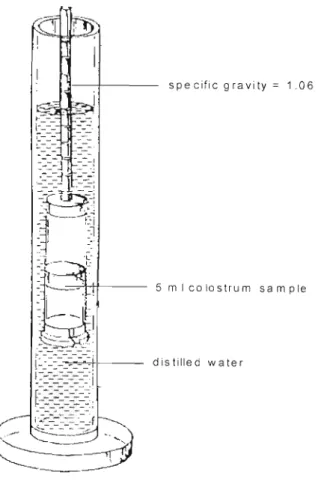
Passive immunity and vaccination programmes
The development of the immune response in the young animal is inhibited by the passive immunity acquired from the mother (Tizard, 2000). Antibodies against some of the serotypes were undetectable within two to four months after birth.
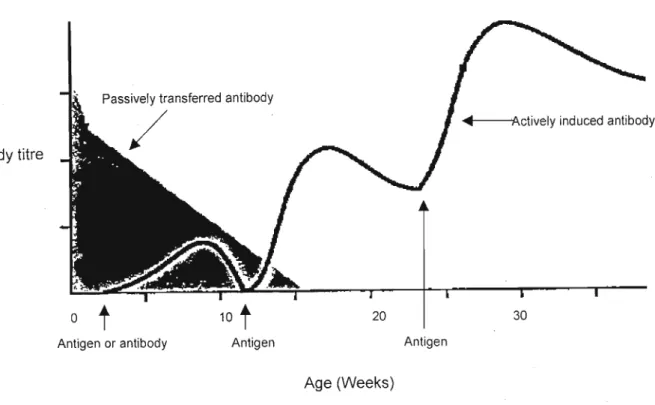
Summary
More research is needed to find the most effective time to vaccinate young foals against AHS for the first time. The second experiment looked at African horse sickness vaccination programs, with an emphasis on when foals should be vaccinated for the first time.
Abstract
This test showed that the results of the three tests (refractometer, GC and ZST) were strongly correlated with those of the SRID test. The age of the mare, her parity and the duration of pregnancy did not affect the transfer of passive immunity in this trial.
Introduction
Although the SRID test provides the most accurate measure of IgG status in the foal, the other tests are inexpensive and provide a diagnosis within an hour (refractometer and ZST within 10 minutes, GC within 10 minutes if positive, longer if negative) . The colostrum test is not a sufficiently reliable predictor of transmission of immunity from mare to foal.
Materials and methods
If the newsprint can be read through the test tube, then the result is negative, Let. Failure of passive transfer of immunity from mare to foal has occurred and the foal has an IgG status of less than 400 mgldl serum. The manufacturer's instructions for the SRID test were followed (Appendix 1). Briefly, 31-11 of standards (supplied) and samples are added to the wells.

Results
The eliminated values were the last nine values when the data was sorted in ascending order by SRID value. The eliminated SRID values ranged from 4125 to 5970 mg/dl. A significant chi-square result means that the null hypothesis of no relationship between the readings is false. The chi-square analysis was used because of a problem with the experimental design.

Discussion
One of the six foals diagnosed as FPT at 12 hours after birth never reached a blood IgG status of 400 mg/dl by the SRID test even after treatment. None of the foals requiring treatment were missed in this trial as the results of three tests were used and foals were treated if any test showed less than complete transfer of passive immunity. If only the refractometer had been used, five of the foals requiring treatment would have been treated if a value of 7.0 was used as the 800 mg/dl reading.
In a review of available tests for passive immune transfer, LeBlanc (1990) stated that the disadvantage of the zinc sulfate test is the number of false positive results. In conclusion, colostrum specific density was shown not to be a good predictor of transfer of passive immunity. Mare age, mare parity and length of pregnancy did not appear to affect the transfer of immunity from mare to foal.

Acknowledgements
The SRID test should also occasionally be used to test the accuracy of the other tests under different laboratory conditions and with different technicians. The choice of ZST, GC or refractometer test as foal side test must be decided by the stud manager and the veterinarian, taking into account local conditions. A study was conducted on the duration of the maternally derived antibodies against African horse sickness (AHS) in foals and the effect of the age of the foal at first vaccination on the response to the vaccination.
The foals were all vaccinated with the primary and booster vaccinations on two designated days, regardless of the age of the foal when these vaccinations were given. These samples were tested with a virus neutralization test to determine antibody titers for each of the nine AHS serotypes. The results showed that the successful response to the vaccine is influenced by the age of the foal at first vaccination, the anti-AHS titer of the foal on the day of vaccination, and the time between vaccination of the mare and birth of the foal (all of which are correlated).
Introduction
Early season foals received poor levels of maternal immunity but responded well to the first vaccination; because late-season foals enjoyed more durable maternal immunity, which affected their response to AHS vaccination and left them susceptible to the disease after vaccination. Fewer foals responded to the second vaccination than the first, but the response was faster, indicating that the foals may have been building on the memory response from the first vaccination. It is recommended that management practices should be changed to better adhere to the recommended vaccination schedule.
Mares are vaccinated at the optimal time to improve passive immunity given to foals, and foals are vaccinated as soon as possible, relative to the disappearance of maternal immunity. African horse sickness is a severe, non-contagious, viral disease of horses with a mortality rate of up to 95% (Murphy et al., 1999) but there is minimal field data available on the immune response of the liver to AHS vaccine. Results from samples submitted to the Onderstepoort Veterinary Institute for testing between 1981 and 2004 show that serotypes 3,5 and 9 are rarely found.
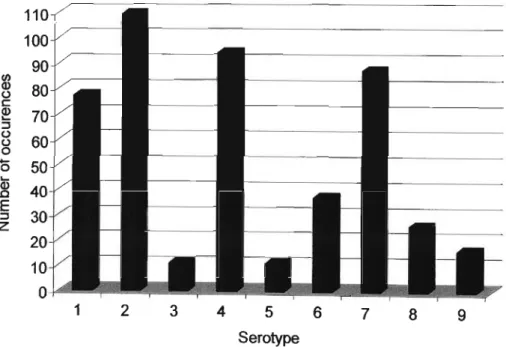
Materials and methods
The virus neutralization test is performed using a constant amount of virus against serum dilutions and the criterion for positive antibodies by microscopic reading is complete neutralization of the input virus, Le. Thus, the virus neutralization test is a quantitative analysis for determining the titer of antibodies, for example, in serum, based on the ability of the serum to neutralize a known amount of a standard virus antigen (Aleff Group, 2000). Neutralization tests assess the ability of antibodies to neutralize the biological activity of the antigen when mixed with it in vitro.
The African horse sickness virus neutralization test is a sero-specific test that measures the amount of IgG and IgM antibodies specific to each serotype in the serum. The test uses decreasing concentrations of the serum against a set amount of virus to determine how much neutralizing antibody is present in the serum. The layout of the analysis in this work meant that the results measured either side of and will be considered the lowest positive reading for the remainder of this discussion.
Results and discussion
Factors that may influence the maternal immunity that the foal receives are the age of the mare and the number of serotypes for which she is positive. There is no clear response pattern, but if the number of serotypes for which the mare had a positive test result on the day of foaling is compared with the number of serotypes for which the foal is positive at four to six weeks of age (Figure 3.6), then a clearer pattern is visible. The more serotypes the mare is positive, the more serotypes the foal is positive.
Mean and median values indicate that most foals have maternal immunity lasting less than eight weeks. These data (Figure 3.7) include four foals that still had a positive antibody titer at the time of vaccination. Therefore, in these cases, maternal immunity may last until the end of vaccination and possibly longer than 18 weeks, although this is unlikely.
Mares
Acknowledgements
The tests investigated were the measurement of colostral specific gravity, the measurement of total serum protein with a refractometer, and the measurement of serum immunoglobulin G with the zinc sulfate turbidity (ZST) and glutaraldehyde coagulation (GC) tests. The results of these methods were compared with the results of measurement of immunoglobulin G using the single radial immunodiffusion (SRID) test. Colostrum specific density has been shown not to be a good predictor of transfer of passive immunity.
Chi-square analysis of the GC, ZST and refractometer results showed that there is a significant relationship (p=0.1) between observed and expected IgG values for all three tests. Trial Two looked at the African horse sickness vaccination programme, focusing on when to vaccinate foals for the first time and what factors influence the response of the foals to the vaccine. This thesis provides valuable field data on the effectiveness of the African horse sickness vaccination under practical conditions in the KwaZulu-Natal Midlands.
Investigation of the Gamma-Check-C assay as a means of assessing IgG levels in equine colostrum. Another option is to use a calculator with the ability to establish a regression line to determine the concentrations of the unknowns. The active ingredient of the vaccine is in the form of powder or pellets in a small bottle.
Full details of the procedure are given in section A5.2, in summary Biobest laboratory (2005) UK Sera containing antibodies to the test virus can neutralize the virus and prevent infection of cells when added. on a plate. The test result is the point at which the serum sample has been so diluted that it cannot.
A positive antibody titer in the work reported here was 1:32 due to the layout of the test plates. 1OOTCID is the working dilution, see Section A5.3 for the calculation and explanation of the working dilution.
